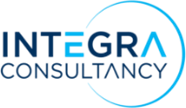The Top 5 Warning Signs Your Workshop Equipment Needs Urgent Attention
Properly maintained workshop equipment is crucial for ensuring a safe and effective learning environment in schools. When machinery is regularly serviced, it operates efficiently, supporting hands-on education in subjects such as technology and applied sciences (TAS). However, neglecting maintenance can lead to significant risks, including expensive repairs, safety hazards for students and staff, and disruptions to learning. In this blog, we’ll outline the top five warning signs that indicate your equipment requires immediate attention, helping schools take prompt action to keep their workshops running safely and smoothly.
1. Increased Noise or Vibration
PROBLEM: Unusual noises or excessive vibration are often early indicators of wear and tear in critical components such as bearings, belts, or motors. While these signs may seem minor, they’re usually the first warning that something is off. In a school setting, where equipment is often used by multiple students over extended periods, this strain can rapidly worsen.
RISK: If left unchecked, these seemingly harmless symptoms can lead to severe damage, resulting in full equipment breakdowns that may take days or even weeks to repair. Not only will this disrupt lessons and delay projects, but the cost of replacing parts—or even entire machines—can significantly strain school budgets. Furthermore, poorly maintained equipment poses an increased risk of accidents, putting both students and staff at risk.
THE SOLUTION: Acting on these early warning signs with regular servicing can avoid the need for expensive repairs. Regular safety audits help identify and address these issues before they become critical, preventing downtime and ensuring a safe learning environment for students.
2. Decreased Efficiency or Performance
PROBLEM: Machines that start taking longer to complete tasks or show inconsistent performance may seem like a minor inconvenience, but this is a red flag for deeper issues like internal wear, clogged filters, or motor fatigue. In a busy school environment, this drop in performance can disrupt the flow of lessons, delay projects, and reduce the overall productivity of practical classes.
RISK: When equipment isn’t performing efficiently, it leads to increased operational costs and longer task completion times. Delaying maintenance could result in a total shutdown, requiring costly repairs or even the replacement of expensive machinery. Additionally, malfunctioning machines increase the risk of accidents or injuries in students, who may not be able to detect faulty operations as easily as trained professionals.
SOLUTION: Scheduling regular maintenance and equipment audits can restore machines to optimal performance before they cause major disruptions. By maintaining high standards for equipment functionality, schools can ensure uninterrupted lessons and reduce long-term costs.
3. Frequent Breakdowns
PROBLEM: Constantly needing small repairs or experiencing regular equipment malfunctions is a sign that your machinery is struggling and nearing the end of its life cycle. These frequent breakdowns often mask underlying issues that can’t be solved by quick fixes. Ignoring the root cause of the problem will only lead to larger, more expensive failures.
RISK: Every breakdown not only costs money in repairs but also wastes valuable teaching time, as students and staff are left without functioning equipment. Recurring failures can severely disrupt workshop classes, impacting student progress and the overall curriculum. Worse, these repetitive malfunctions can become dangerous, increasing the risk of machine-related injuries due to unexpected breakdowns.
SOLUTION: An in-depth equipment audit can identify the underlying issues causing these frequent failures. By addressing these concerns early, schools can avoid significant future expenses and ensure the safety of students, staff, and the equipment itself.
4. Visible Wear and Tear
PROBLEM: Physical signs of wear and tear—such as frayed wires, cracked belts, or rusting parts—are clear indicators that your equipment is in need of immediate maintenance. In a school environment where dozens of students interact with machines daily, these visible issues can quickly escalate if left unchecked.
RISK: Visible damage is not just a cosmetic issue; it’s a serious safety concern. Exposed wiring, for instance, increases the risk of electrical shock, while worn belts or gears can lead to sudden equipment failure, potentially causing accidents. Schools have a duty of care to their students and staff, and failing to address these visible issues could lead to serious legal and financial repercussions in the event of an accident.
SOLUTION: Addressing visible wear and tear through routine maintenance and audits can prevent accidents and extend the life of your equipment. Regular safety checks ensure that schools remain compliant with WHS regulations, safeguarding both students and staff.
5. Increased Energy Consumption
PROBLEM: A noticeable spike in energy consumption, or sudden increases in electricity bills, is often a sign that equipment is not running as efficiently as it should be. Faulty or outdated machinery tends to consume more power, placing an unnecessary strain on school budgets and the environment.
RISK: Increased energy use not only drives up operational costs but also signals that the equipment is malfunctioning internally. Malfunctions can increase the risk of overheating, electrical fires, or other hazardous situations in the workshop. Schools may face significant repair costs or liability if faulty equipment leads to property damage or injury.
SOLUTION: A timely audit can identify machinery that is consuming too much energy, allowing for repairs or upgrades that save money in the long run. By addressing energy inefficiencies, schools can reduce their operational costs, improve safety, and contribute to environmental sustainability, which is increasingly important in today’s educational landscape.
Why Urgency Matters
Procrastinating on maintenance can lead to avoidable accidents, budget overruns, and a decline in the quality of education. By recognising and acting on these warning signs, schools can protect their staff, students, and finances. Regular audits and preventive maintenance will keep workshops running smoothly, ensuring that schools can focus on what matters most: delivering quality education in a safe and efficient environment. Reach out to Integra Consultancy today to schedule an appointment and secure peace of mind for your school.

